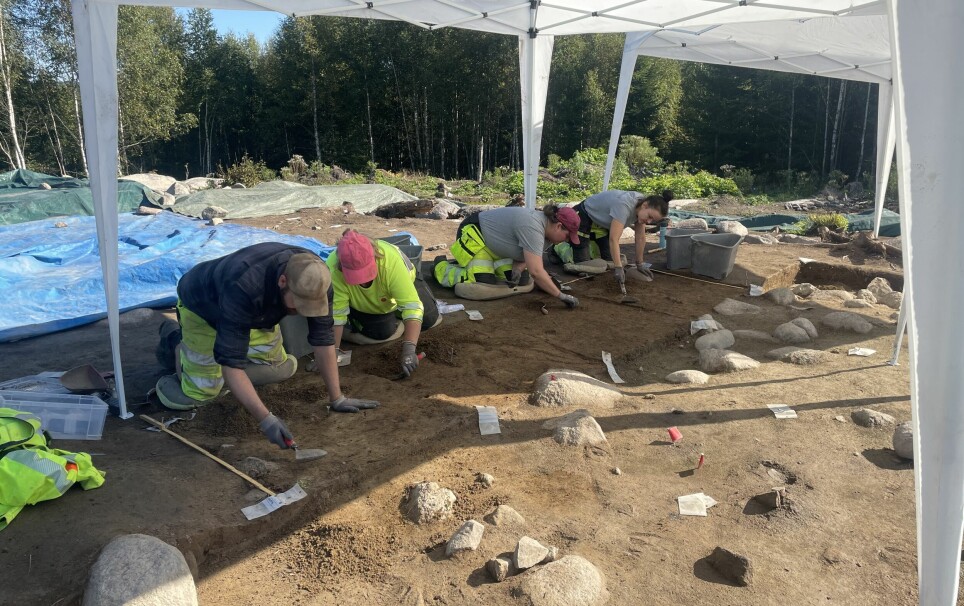
Here’s what Norwegian archaeologists discovered in 2022
5,000-year-old rock art. The remains of a 1,600-year-old house. A shipwreck at the bottom of a lake. A Viking grave, a Viking sword and a Viking silver treasure. These are among the top finds from Norway in the year gone by.
What were the most interesting, beautiful, rarest and/or most remarkable archaeological finds in Norway in 2022?
We asked archaeologists and the University museums – here are the answers they gave, in no particular order:
Shipwreck at the bottom of Norway’s largest lake
In November, archaeologists discovered a shipwreck at the bottom of lake Mjøsa. This find received a lot of media attention both in Norway and internationally.
The researchers were looking for explosives and ammunition that were dumped in Mjøsa after the Second World War. Then, at 410 metres, they found the ship.
There is a lot we don’t know about the ship. It has not been raised, and the researchers only have unclear sonar images to go by. But they estimate that it is between 170-700 years old.
Ship traffic over Mjøsa has been extensive throughout history. Huge naval battles have even been fought here.
“If we are going to find a Viking shipwreck in Norway, then Mjøsa is probably the place with the most potential for such a find,” Øyvind Ødegård, a marine archaeologist at NTNU University museum, said to sciencenorway.no.

Remains of a 1,600-year-old house
A stretch of the European Route E18 is being expanded south of Oslo, between Ås and Nordre Follo. This means that archaeologists first get to search for remains of cultural heritage.
They have found a lot. The most spectacular find are the remains of a 1,600-year-old house.
“What’s special and remarkable about the remains of this house is that they are so well preserved. This is because after the house burnt down, the remains have been left untouched in the woods for 1,600 years,” writes Grethe Bjørkan Bukkemoen from the Museum of Cultural History at the University of Oslo in an email to sciencenorway.no.
The house was between 30 and 40 metres long, and about 7 metres wide. The archaeologists have learned important things about building construction and the plot, about life inside the house and how it burned down. They found many objects such as clay pots, tools and burned bones from cooking.
The finds give a unique insight into what went on in the house. It’s been many years since a house as well preserved as this one has been examined, according to Bukkemoen.
The house is from the migration period, in 400-550 AD. This was a time of great change in society.
“In the 500s we know that a number of farms were abandoned. The house in Oppsal is an important piece of the puzzle that allows us to understand this period and how people in these times were affected by and handled times of crises,” Bukkemoen writes.
The house remains were named finding of the year 2022 at the Norwegian archaeology meeting in Trondheim.

Silver treasure from the Viking Age
Pawel Bednarski was searching around with a metal detector in a field in Stjørdal, a municipality in Trøndelag, mid-Norway. All of a sudden, he found a ring. And another ring. And then lots of other things. All in all, he found 46 small pieces of silver.
Bednarski handed the find over to archaeologists in the county municipality, who got in touch with the University museum at NTNU.
“This is quite an exceptional find. Finding this big a treasure from the Viking Age hasn’t happened in Norway for a long time,” Birgit Maixner, an archaeologist at NTNU University museum said to the NTNU-magazine Norwegian scitechnews.
The bits of silver were pieces of jewellery and Arabic coins that had been divided into pieces. Several of them only weighed one gram and were most likely used as a form of payment.
Archaeologists don’t know for certain why the silver was buried. It could have been in order to secure the treasure, or it could have been an offering to the Gods, according to Maixner.
The find was discovered toward the end of 2021, but was only examined and dated in 2022.
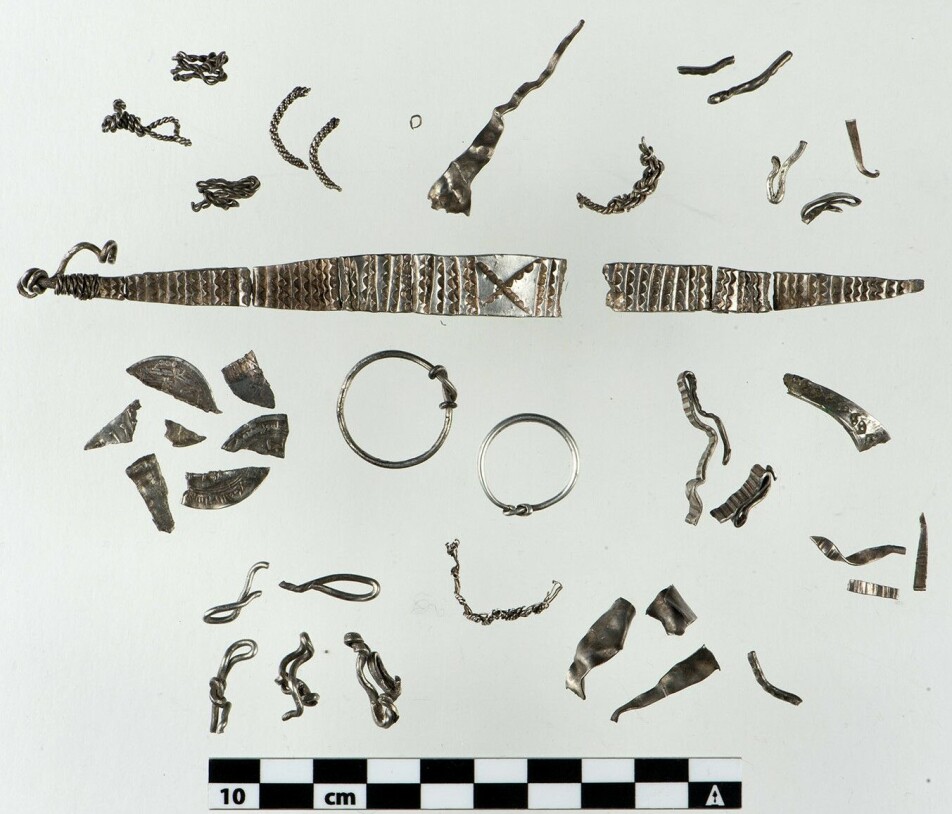
Sword from the Viking Age
The Sword was found in Stavanger in southwestern Norway. The blade is missing, but the elaborately decorated hilt is well preserved.
The sword has details in gold and silver. It is decorated with animal heads and geometrical figures.
“The technique is of a very high quality, and both the lavish and complicated decor and the special formation of the crossguard make this a truly unique find,” archaeologist Zanette Glørstad from the Museum of Archaeology, University of Stavanger, said of the find.
The sword is from the early 800s and was probably imported from France or England.
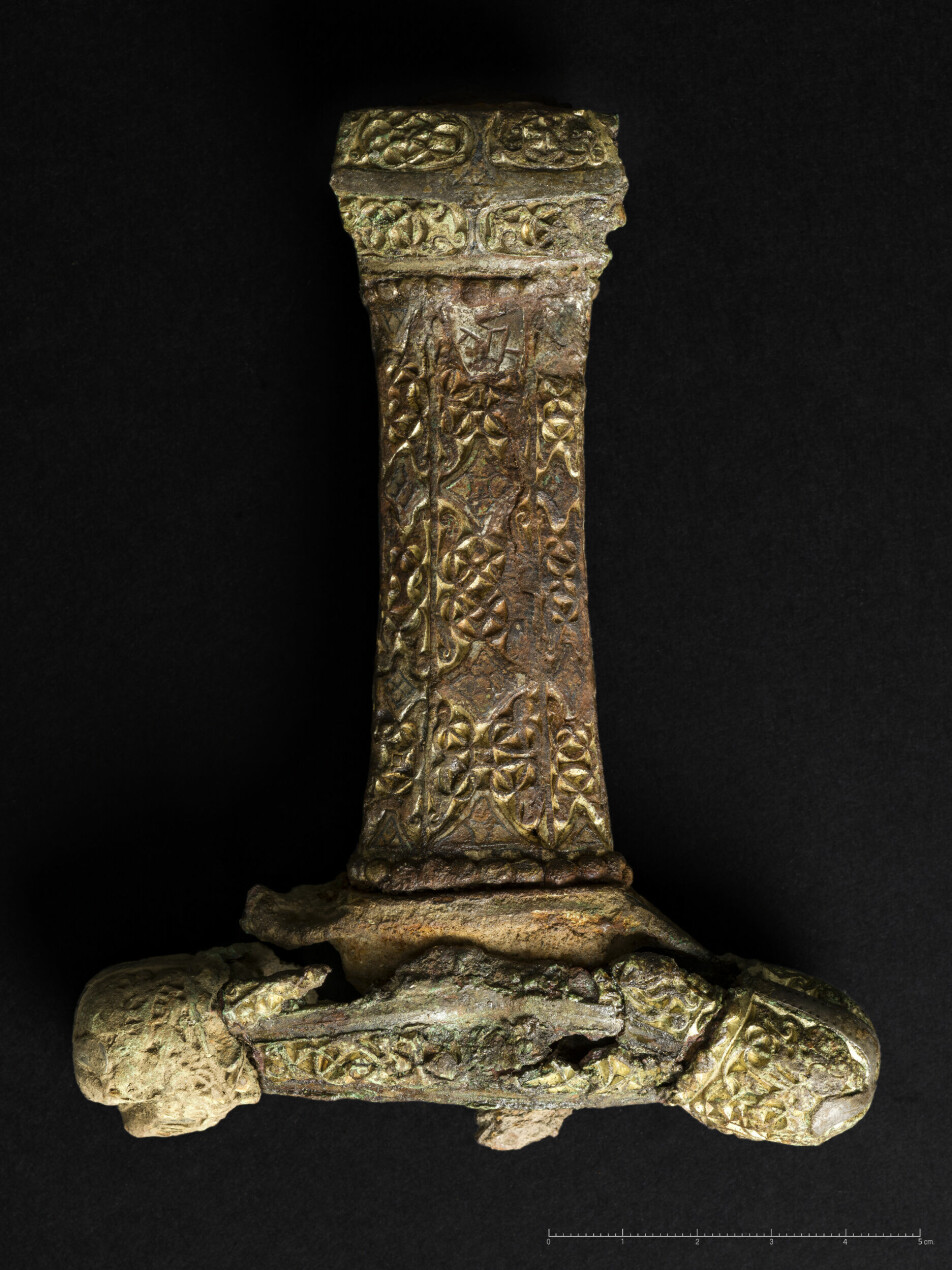
Viking grave found in Norway’s capital Oslo
In a residential area in the western part of Oslo, somebody wanted to build a new detached house. The grounds were first examined by archaeologists from the Oslo Municipality Cultural Heritage Management Office.
They found a grave from the Viking Age!
It contained burned human remains, but also many objects. The archaeologists found a sickle, two knives, horse tack such as a possible bridle, a bell, and fragments of a soapstone vessel.
The grave also contained a penannular brooch - also known as a Celtic brooch, and a shield boss, which is the metal in the centre of a wooden shield.
“For now, the grave has been dated based on the artefacts it contains. This type of brooch with spheres begin to appear in approximately AD 850 and became common after the 10th century AD,” archaeologist Marianne Bugge Kræmer said to sciencenorway.no.

Skis from the pre–Viking Age
Archaeologists in the Secrets of the Ice project look for things that melt out of glaciers and ice patches in the mountains in Innlandet municipality.
They have found knives, shoes, arrowheads and horse dung, among other things. A few years ago they found a ski in Reinheimen national park.
The other ski in what turned out to be a pair of skis melted out of the ice several years later. In November 2022 the skis were dated to around 750 to 850, according to Professor Brit Solli at the Museum of Cultural History at the University of Oslo. The last person to use these skis thus lived during the early Viking Age.
“This is the oldest complete pair of skis to be found in Norway. They represent Norwegian-Sami mountain history at its most fascinating. We don’t know which ethnicity or gender the skier had,” Professor Solli writes in an email to Sciencenorway.no.
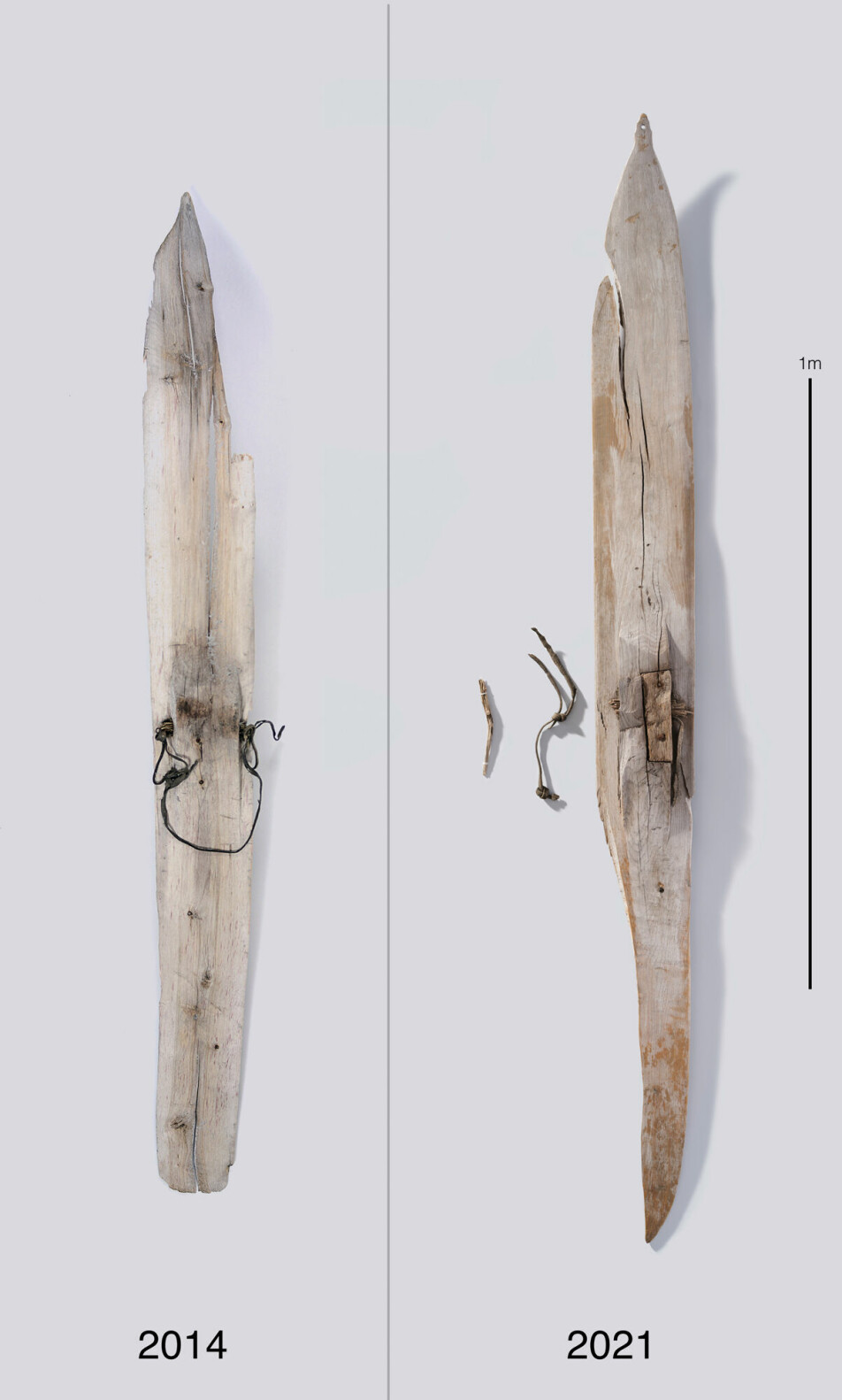
5,000-year-old rock art from Northern Norway
One of the rock paintings pictured a moose and a human. The other showed geometrical figures that might be yarn.
The rock art was found in Transfarelv in Alta municipality. Hobby historian Svein-Erik Hodneland discovered them and contacted Alta museum.
Archaeologists were quick to visit the site.
“This is exactly the sort of thing that makes it fun and interesting to be an archaeologist. It was like Christmas eve for us when Svein-Erik told us what he had found,” archaeologist Mari Strifeldt Arntzen at Alta museum said to the Norwegian Broadcasting Corporation (link in Norwegian).
The two paintings are dated to around 2,000-3,000 BC, meaning they could be as much as 5,000 years old, according to Ingrid Sommerseth at UiT The Arctic University of Norway.
She believes the art has been painted on the rock using fingers. The paint is probably a mixture of fat and red stone dust.
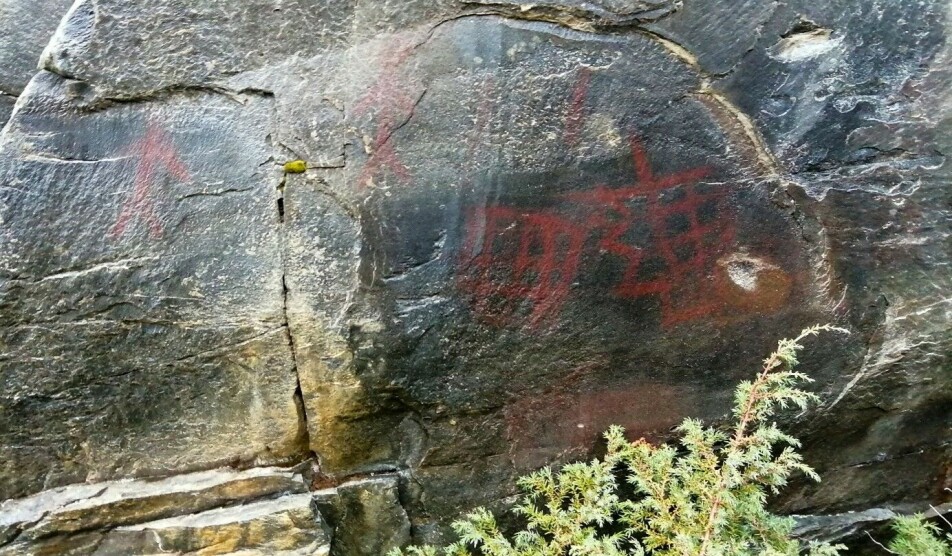
Meeting places, medieval times, and glacial archaeology
Sciencenorway.no has written about several other archaeological finds during the past year:
The development of the high-speed railway the Follo Line was the reason for several excavations in the Medieval Park in Oslo. Archaeologists found heaps of items. The finds reveal that Norway has historically been a relatively wealthy and well-connected nation in Europe, according to archaeologists from NIKU, the Norwegian Institute for Cultural Heritage Research. They listed their most exciting finds for sciencenorway.no’s readers in the article Medieval excavation greatest hits: 800 years ago a fashion queen strolled the streets of Oslo in this elegant shoe.
Analysis of the graves of 227 people showed that rich folks in medieval Norway were tall and had strong bones.
Norway’s oldest meeting place could be the Kirkhellaren Cave on Sanna in Træna. Here, archaeologists found a 2,000-year-old ceramics factory. People have gathered in these caves for 10,000 years. They met to exchange knowledge, according to Mikael Fauvelle, who was head of the excavations last summer. Read more about this in an article produced by the Fram Centre.
Translated by: Ida Irene Bergstrøm
------
Read the Norwegian version of this article on forskning.no
































